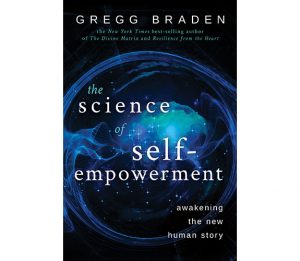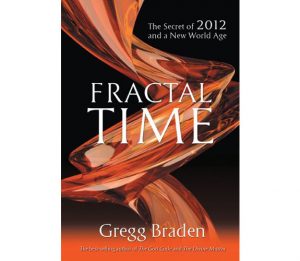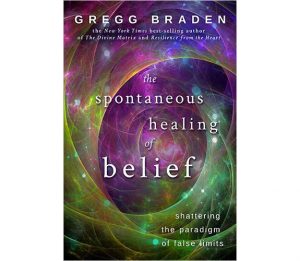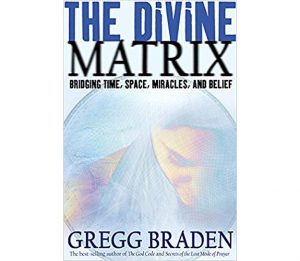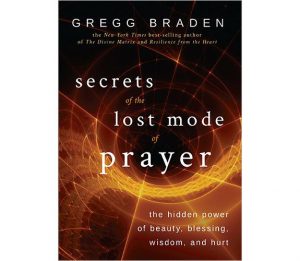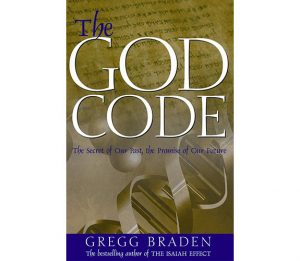Please select one of Gregg Braden’s books below to view its citations and reference section.
Resilience from the Heart: Resources
 Chapter 1: The Uncharted Heart
Chapter 1: The Uncharted Heart
1. Paul P. Pearsall, The Heart’s Code: Tapping the Wisdom and Power of Our Heart Energy (New York: Broadway Books, 1999): Foreword, p. xiii.
2. “Statistics,” Donate Life America. Website: http://donatelife.net/statistics.
3. DNA as information stored in bacteria. Lucas Mearian, “Scientists: Data- Storing Bacteria Could Last Thousands of Years,” ComputerWorld (Feb 27, 2007). Website: http://www.computerworld.com/article/2543486/data-center/scientists–data-storing-bacteria-could-last-thousands-of-years.html.
4. Physicist Neil deGrasse Tyson as quoted by Rebecca Boyle, “PopSci Talks to Neil deGrasse Tyson about Politics, New Frontiers, and Science Evangelism,” Popular Science (February 27, 2012). Website: http://www.popsci.com/science/article/2012-01/popsci-qampa-neil-degrasse-tyson-politics-new-frontiers-and-science-evangelism/.
5. Mayfield Clinic & Spine Institute, “Anatomy of the Brain,” Mayfield Brain & Spine. Website: http://www.mayfieldclinic.com/PE-AnatBrain.htm#.VYTaBFVViko.
6. Ralph Marinelli, et al., “The Heart Is not a Pump,” Frontier Perspectives (Fall– Winter 1995). Digital version of this research paper from the Rudolf Steiner archives: http://www.rsarchive.org/RelArtic/Marinelli.
7. Ibid.
8. Passage from the King James Bible, Proverbs 20:5.
9. Daisaku Ikeda, “The Wisdom of the Lotus Sutra,” Soka Gakkai International. Website: http://www.sgi.org/sgi-president/writings-by-sgi-president-ikeda/the-wisdom-of-the-lotus-sutra.html.
10. J. Andrew Armour, M.D., Ph.D., Neurocardiology: Anatomical and Functional Principles (Boulder Creek, CA: Institute of HeartMath, 2003).
11. Ibid.
12. Biography for St. Macarius and source for quote. “Fifty Spiritual Homilies of Saint Macarius the Egyptian, Homily XLIII.” Website: http://www.ecatholic2000.com/macarius/untitled-46.shtml#_Toc385610658.
13. Claire Sylvia, A Change of Heart: A Memoir (New York: Warner Books, 1997).
14. Paul P. Pearsall, The Heart’s Code: Tapping the Wisdom and Power of Our Heart Energy (New York: Broadway Books, 1999).
15. Max Planck, from a speech that he gave in Florence, Italy, in 1944, entitled “Das Wesen der Materie” (The Essence/Nature/Character of Matter) Quelle: Archiv zur Geschichte der Max-Planck-Gesellschaft, Abt. Va, Rep. 11 Planck, Nr. 1797.
16. General Information for the Institute of HeartMath. Website: http://www.HeartMath.org.
17. “Mother-Baby Study Supports Heart-Brain Interactions,” HeartMath Institute (April 20, 2008). Website: https://www.heartmath.org/articles-of-the-heart/science-of-the-heart/mother-baby-study-supports-heart-brain-interactions.
18. Ibid.
19. “Simplicity Is the Ultimate Sophistication,” Quote Investigator (April 2, 2015). Website: http://quoteinvestigator.com/2015/04/02/simple.
20. “The Quick Coherence® Technique for Adults,” HeartMath Institute. Website: https://www.heartmath.org/resources/heartmath-tools/quick-coherence-technique-for-adults.
21. Janine Willis and Alexander Todorov, “First Impressions: Making Up Your Mind After a 100-Ms Exposure to a Face,” Psychological Science, Princeton University Research Paper (November 15, 2005). Website: http://psych.princeton.edu/psychology/research/todorov/pdf/Willis%26Todorov-PsychScience.pdf.
22. “What Is Intuition?” HeartMath Institute (October 8, 2012). Website: http://www.heartmath.org/articles-of-the-heart/the-math-of-the-heart/what-is-intuition.
23. Jeffrey Zaslow, “Interview: Robert Redford,” USA Weekend (November 25, 2001). Website: http://159.54.226.237/01_issues/011125/011125redford.html.
24. Maggie Harbour, “EXCLUSIVE: Mark Wahlberg Changes His Plan to Fly Commercial to LA Today and Hires Private Jet Instead After He Cheated Death on 9/11,” Daily Mail (September 11, 2014). Website: https://www.dailymail.co.uk/news/article-2752304/EXCLUSIVE-Mark-Wahlberg-changes-plan-fly-commercial-today-Los-Angeles-hires-private-jet-not-taking-chances-cheated-death-9-11.html.
25. Mike Sager, “What I’ve Learned: Jaime Pressly,” Esquire (February 20, 2007). Website: http://www.esquire.com/entertainment/interviews/a2289/esq0107jaimepressly.
26. Elaine Hernandez Soto, “Olmos Captivates Crowd with Speech,” Gazette- Enterprise (September 20, 2001). Website: https://web.archive.org/web/20011130084223/http:/web.seguingazette.com/story.lasso?-datasource=seguin&-table=newsc&-keyfield=ID&-op=eq&ID=402&-search.
27. DJ Bem, “Feeling the Future: Experimental Evidence for Anomalous Retroactive Influences on Cognition and Affect,” Journal of Personality and Social Psychology (January 31, 2011). Advance online publication. DOI: 10.1037/a0021524
28. R. McCraty, Ph.D., M. Atkinson, and R.T. Bradley, Ph.D., “Electrophysiological Evidence of Intuition: Part 1. The Surprising Role of the Heart,” The Journal of Alternative and Complementary Medicine, vol. 10, no. 1 (2004): pp. 133–143.
29. E.W. Silvertooth, “Special Relativity,” Nature, vol. 322 (August 1986): p. 59.
 Chapter 2: Resilience from the Heart
Chapter 2: Resilience from the Heart
1. This statement comes from the opening quote for the Time special edition “Beyond 9/11.” Website: http://www.time.com/time/beyond911/#.
2. Ibid.
3. A definition of resilience from the American Psychological Association. Website: http://psychcentral.com/lib/2007/what-is-resilience.
4. An expanded definition of resilience that may be applied to nature as well as society, from the Stockholm Resilience Centre website: http://www.stockholmresilience.org/21/research/what-is-resilience.html.
5. Janice Harris Lord and Kevin O’Brien, “Core Elements and Strategies for Victim Service Providers to Develop Resilience,” an excerpt from “Chapter 10: Developing Resilience,” in National Victim Assistance Academy Track 1: Foundation-Level Training (March 2011): pp. 9–18. Website to download: https://www.ovcttac.gov/downloads/views/TrainingMaterials/NVAA/Documents_NVAA2011/ParticipantText/10_NVAA_MAR_2011_Developing_Resilience_PText_final.doc
6. Peter Corbett, “Ex-Iran Hostage Survived on Faith, Power of Prayer,” The Arizona Republic (November 9, 2012). Retrieved from: http://www.azcentral.com/community/articles/20121106ex-iran-hostage-survived-faith-power-prayer.html.
7. Terry Anderson, as quoted by Pierre Tristam, “Terry Anderson Remembers His Ordeal as a Hostage in Lebanon,” Middle East Issues, About.com. Website: http://middleeast.about.com/od/lebanon/a/me081206f.htm.
8. Scott Barry Kaufman, “The Will and Ways of Hope,” Psychology Today (December 26, 2011). Website: http://www.psychologytoday.com/blog/beautiful-minds/201112/the-will-and-ways-hope.
9. Ibid.
10. Jennifer Holmes, M.A., “Healthy Relationships: Their Influence on Physical Health,” BC Council for Families (2011). Website: http://www.bccf.ca/all/resources/healthy-relationships-their-influence-physical-health.
11. Eleanor Roosevelt, You Learn by Living: Eleven Keys for a More Fulfilling Life (Louisville, KY: Westminster John Knox Press, 1960).
12. Bruce Lipton, The Biology of Belief: Unleashing the Power of Consciousness, Matter & Miracles (Santa Rosa, CA: Mountain of Love/Elite Books, 2005): pp. 146–150.
13. Rollin McCraty, Bob Barrios-Choplin, Deborah Rozman, Mike Atkinson,and Alan D. Watkins, “The Impact of a New Emotional Self-Management Program on Stress, Emotions, Heart Rate Variability, DHEA and Cortisol,” Integrative Physiological and Behavioral Science, vol. 33, no. 2 (1998): pp. 151–170. Website: http://www.heartmath.org/research/research-publications/impact-of-a-new-emotional-self-management-program-on-stress-emotions-heart-rate-variability.html.
14. Ibid.
15. Kahlil Gibran, The Prophet (New York: Alfred A. Knopf, 1923): p. 30.
16. Rollin McCraty, Raymond Trevor Bradley, and Dana Tomasino, “The Resonant Heart,” Shift (December 2004–February 2005): pp. 15–19.
17. This quote is one of my favorites regarding the interrelated nature of community, life, and us. M. Scott Peck (1936–2005), American psychiatrist and author. The Different Drum: Making Community and Peace (New York: Touchstone, 1987).
 Chapter 3: Resilient Living
Chapter 3: Resilient Living
1. Zerihun Kassa, as quoted by Bethany Marinelli in “Herds to Harvest: A Community Transformed,” Global Hope Network International (February 20, 2013). Website: http://globalhopenetwork.org/herds-to-harvest-a-community-transformed.
2. Ibid. see above
3. Michael Krasny, “What Is Community?” Mother Jones (May/June 1994). Website: http://www.motherjones.com/politics/1994/05/what-community.
4. Ibid.
5. Ibid.
6. Back to the Future (1985), directed by Robert Zemeckis, with Michael J. Fox, Christopher Lloyd, Lea Thompson, and Crispin Glover.
7. Anthony Giddens, The Consequences of Modernity (Stanford, CA: Stanford University Press, 1990): p. 64.
8. “Glossary: Globalisation,” United Nations Educational, Scientific, and Cultural Organization. Website: http://www.unesco.org/new/en/social-and-human-sciences/themes/international-migration/glossary/globalisation.
9. Henry M. Paulson, Jr., “It Could Have Been A Lot Worse: A Conversation with Henry Paulson,” The American Interest (May/June 2010). Website: http://www.the-american-interest.com/article.cfm?piece=815.
10. Lee Crockett, “Overfishing 101: Protecting Tuna with Technology,” National Geographic (posted September 27, 2011). Website: http://newswatch.nationalgeographic.com/2011/09/27/overfishing-101-protecting-tuna-with-technology.
11. Theodore Bestor, as quoted in an article by Ken Gewertz, “Fish Story: Anthropologist Bestor Looks at Globalization and Culture Through Study of Sushi Market,” Harvard University Gazette (December 6, 2001). https://news.harvard.edu/gazette/story/2001/12/fish-story/
12. Thomas L. Friedman, “Overblown Fears, #10: Globalization,” Newsweek (2010). Website: http://2010.newsweek.com/top-10/most-overblown-fears/globalization.html.
13. Ibid.
14. Judith Rodin and Robert Garris, “Reconsidering Resilience for the 21st Century,” an essay based on prior research and writing done by several colleagues at the Rockefeller Foundation, including Heather Grady, Claudia Juech, Anna Brown, Ashvin Dayal, Bethany Martin-Breen, Stefan Nachuk, Cristina Rumbaitis del Rio, and Fern Uennatornwaranggoon. The Rockefeller Foundation. Website: http://www.rockefellerfoundation.org/blog/reconsidering-resilience-21st-century.
15. Judith Rodin, as quoted by Arianna Huffington, “Worldwide Resilience Key to Our Future,” Chicago Tribune (January 23, 2013).
16. Ibid.
17. Massoud Amin, “U.S. Electrical Grid Gets Less Reliable as Outages Increase and R&D Decreases,” University of Minnesota College of Science and Engineering (February 22, 2011). Website: http://tli.umn.edu/blog/security-technology/u-s-electrical-grid-gets-less-reliable-as-outages-increase-and-rd-decreases. This link does not seem to work anymore.
18. “Some Grocery Store Shelves Empty in NYC,” ABC New York News (December 30, 2010). Website: http://abclocal.go.com/wabc/story?section=news/local/new_york&id=7870930.
19. Kayla Webley, with reporting by Christopher Matthews, “Hurricane Sandy by the Numbers: A Superstorm’s Statistics, One Month Later,” Time (November 26, 2012). Website: http://nation.time.com/2012/11/26/hurricane-sandy-one-month-later.
20. Attributed by Diogenes Laërtius to Heracleitus, 6th-century B.C.E. Greek philosopher. Website: http://en.wikiquote.org/wiki/Heraclitus.
21. Isaac Asimov (1920–1992), Russian-American science-fiction writer.“My Own View,” published in The Encyclopedia of Science Fiction, ed. Robert Holdstock (1978).
22. Robert Cherry, Medical Director of Penn State Shock Trauma Center, “Business Testimonials: Penn State University,” Federal Emergency Management Agency. Website: http://www.ready.gov/business/business-testimonials.
23. Ibid.
24. Ibid.
25. Margaret J. Wheatley describes the scope of her work at the Berkana Institute. Website: http://berkana.org/about.
26. Summary for the Berkana Institute philosophy of community. Website: http://resilientcommunities.org.
27. To enable 100 cities to better address major 21st-century challenges, the Rockefeller Foundation is inviting cities from around the world to apply for the 100 Cities Challenge. Website: http://100resilientcities.rockefellerfoundation.org/resilience.
28. A series of conferences designed to create greater resilience for the city of Philadelphia. Website: http://www.phil.frb.org/community-development/events/2012/reinventing-older-communities.
29. A description of San Francisco’s efforts to “retrofit the buildings and infrastructure that sustain city life. Our goal is to ensure San Francisco’s resiliency and our capacity to not only survive but thrive when a disaster strikes.” Website: http://www.spur.org/initiative/resilient-city.
30. An innovative initiative in New York that emphasizes the need for a holistic resilience agenda and answers the question: “How resilient is New York City? Can we absorb sudden shocks to our economy, to our natural environment, to our way of life?” Websites: http://mas.org/mass-resilience-agenda and http://mas.org/video/building-resilient-cities-future-model-sustainability-community.
 Chapter 4: Now Is Different
Chapter 4: Now Is Different
1. Johan Rockström, Will Steffen, and Kevin Noone, et al., “A Safe Operating Space for Humanity,” Nature, vol. 461 (September 24, 2009): pp. 472–475. Website: http://www.nature.com/nature/journal/v461/n7263/full/461472a.html.
2. Omar Baddour, as quoted in an article by Sarah Lyall, “Heat, Flood or Icy Cold, Extreme Weather Rages Worldwide,” The New York Times (January 10, 2013): p. A4. Website: http://www.nytimes.com/2013/01/11/science/earth/extreme-weather-grows-in-frequency-and-intensity-around-world.html.
3. Dim Coumou, as quoted in an article, “Global Warming Has Increased Monthly Heat Records Worldwide by a Factor of Five, Study Finds,” Science Daily (January 14, 2013). Website: http://www.sciencedaily.com/releases/2013/01/130114101732.htm.
4. Ibid.
5. Craig Loehle and J. Huston McCulloch, “Correction to: A 2000-Year Global Temperature Reconstruction Based on Non-Tree Ring Proxies,” Energy & Environment, vol. 19, no. 1 (2008): pp. 93–100. Retrieved from: http://www.econ.ohio-state.edu/jhm/AGW/Loehle/LoehleMcC_E&E_2008.pdf.
6. Joel E. Cohen, “Human Population Grows Up,” Scientific American, special edition “Crossroads for Planet Earth” (September 2005): p. 48.
7. Central Intelligence Agency, “Population Growth Rate,” The World Factbook. Retrieved June 21, 2013, from: https://www.cia.gov/library/publications/the-world-factbook/rankorder/2002rank.html?countryName=Fiji&countryCode=fj®ionCode=au&rank=136.
8. Reported in “How Much Coal Is Left?” Greenbang. Website: http://www.greenbang.com/how-much-coal-is-left_21367.html.
9. Alfred J. Cavallo, “Hubbert’s Petroleum Production Model: An Evaluation and Implications for World Oil Production Forecasts,” Natural Resources Research, vol. 13, no. 4 (December 2004): pp. 211–221.
10. A commonly accepted definition for reserve currency. Retrieved June 21, 2013, from: http://en.wikipedia.org/wiki/Reserve_currency.
11. An interactive debt clock with up-to-the-minute calculations for the combined debt of the world’s largest economies. “The Global Debt Clock,” The Economist. Website: http://economist.com/content/global_debt_clock.
12. Table of gross domestic product to debt ratios for the world’s advanced and emerging economies from 2010 through 2016, with estimates beyond 2013. “Comparing Debt Ratios,” The Wall Street Journal (April 20, 2011). Website: http://online.wsj.com/article/SB10001424052748703789104576272891515344726.html.
13. Tim McMahon, “What Is the Inflation Adjusted Price of Corn?” InflationData.com (November 16, 2011). Website: http://inflationdata.com/Inflation/Inflation_Articles/Corn_Inflation.asp.
14. Tim McMahon, “Inflation Adjusted Gasoline Prices,” InflationData.com (July 16, 2013). Website: http://inflationdata.com/Inflation/Inflation_Rate/Gasoline_Inflation.asp.
15. Peggy Noonan, “A Time of Lore: We Live Through an Agincourt a Day, Yet Life Goes On,” The Wall Street Journal (July 26, 2002). Website: http://online.wsj.com/article/SB122418845573142011.html.
16. Lonnie Thompson, as quoted in an article by Earle Holland, “Major Climate Change Occurred 5,200 Years Ago: Evidence Suggests That History Could Repeat Itself,” Ohio State University Research News (December 15, 2004). Website: http://researchnews.osu.edu/archive/5200event.htm.could-repeat-itself/.
17. Ibid.
18. George Musser, “The Climax of Humanity,” Scientific American, special edition “Crossroads for Planet Earth” (September 2005): pp. 44–47.
19. Abstract and link to full report by World Economic Forum, Global Risks 2013, Lee Howell, editor in chief. Website: http://www.weforum.org/reports/global-risks-2013-eighth-edition.
20. “The Climax of Humanity”: pp. 44–47.
21. Stephen Konarik, as quoted in an article by Childs Walker, “Magnitude of Friday’s Storm Shocked Meteorologists, Utility Workers,” The Baltimore Sun (June 30, 2012). Website: http://articles.baltimoresun.com/2012-06-30/news/bs-md-storm-unexpected-20120630_1_utility-workers-storm-bge.
22. Ibid.
 Chapter 5: The Good News
Chapter 5: The Good News
1. Garson O’Toole, Quote Investigator, “The Chains of Habit Are Too Light to Be Felt Until They Are Too Heavy to Be Broken.” Website: http://quoteinvestigator.com/2013/07/13/chains-of-habit.
2. Peter Drucker, Management Challenges for the 21st Century (Burlington, MA: Elsevier, 1999): p. 62.
3. President John F. Kennedy (1917–1963). Excerpt from the public declaration that America would focus its resources to accomplish the first lunar mission before 1970. National Aeronautics and Space Administration Website: http://www.nasa.gov/vision/space/features/jfk_speech_text.html.
4. Spoken by Neil Armstrong. “One Small Step, Corrected Transcript and Commentary by Eric M. Jones” (1995). Video of the historic lunar landing is also available. NASA Website: http://www.hq.nasa.gov/alsj/a11/a11.step.html.
5. “2013 World Hunger and Poverty Facts and Statistics,” Hunger Notes. World Hunger Education Service Website: http://www.worldhunger.org/articles/Learn/world%20hunger%20facts%202002.htm.
6. Ibid.
7. Ibid.
8. United States Environmental Protection Agency, “Natural Gas.” Website: http://www.epa.gov/cleanenergy/energy-and-you/affect/natural-gas.html.
9. Advances in renewable energy sources will make them more viable as local alternatives that supplement regional energy systems. Green Progress, “Alternative Energy.” Website: http://www.greenprogress.com/alternative_energy.php.
10. The UN Millennium Development Goals 2015 goal for poverty reduction was achieved ahead of schedule. United Nations Website: http://www.un.org/millenniumgoals///poverty.shtml.
11. Lester R. Brown, “Is Our Civilization at a Tipping Point?” Hunger Notes. World Hunger Education Service Website: http://www.worldhunger.org/articles/09/editorials/brown_tipping.htm.
12. David Gershon, “Social Change 2.0: A Blueprint for Reinventing Our World,” Sustainable City Network (November 12, 2010). Website: http://www.sustainablecitynetwork.com/blogs/david_gershon/article_5b8f63d2-eea0-11df-8077-0017a4a78c22.html. This link does not seem to work anymore.
13. The Paolo Soleri community of Arcosanti Website: http://www.arcosanti.org.
14. Edmund J. Bourne, Global Shift: How a New Worldview Is Transforming Humanity (Oakland, CA: New Harbinger Publications, 2008): p. 322.
15. Ibid.
16. Gregg Braden, Deep Truth: Igniting the Memory of Our Origin, History, Destiny and Fate (Carlsbad, CA: Hay House, 2011): pp. 219–222.
17. Ibid: pp. 139–183.
18. Gregg Braden, The Divine Matrix: Bridging Time, Space, Miracles, and Belief (Carlsbad, CA: Hay House, 2007): pp. 101–122.
19. Ibid.
20. Deep Truth: pp. 93–138.
21. Ibid.
22. Ibid: pp. 219–222.
23. Ibid: pp. 139–183.
24. The Divine Matrix: pp. 61–100.
25. Ibid: pp. 37–58.
26. Lawrence H. Keeley, as quoted by R. Brian Ferguson in “The Birth of War,” Natural History, vol. 112, no. 6 (July/August 2003) Website: http://iweb.tntech.edu/kosburn/history-444/birth_of_war.htm.
27. Ravi Logan, Prout Institute, “Opening Address for the Symposium on the Humanistic Aspects of Regional Development,” Birobidzhan, Russia (September 1993).
28. Opinion voiced by Sir Martin Rees, Royal Society Research Professor at Cambridge University, and quoted by Andrew Walker, “Sir Martin Rees: Prophet of Doom?” BBC News (April 25, 2003). Website: http://news.bbc.co.uk/1/hi/in_depth/uk/2000/newsmakers/2976279.stm.
29. George Musser, “The Climax of Humanity,” Scientific American, special edition “Crossroads for Planet Earth” (September 2005): pp. 44–47.
30. Ibid: p. 47.
31. Ibid.
32. Tad Williams, To Green Angel Tower, Part 1 (New York: DAW Books, 1993): p. 771.
33. Paul R. Ehrlich. The Population Bomb (New York: Ballantine Books, 1968): p. xi.
34. Paul R. Ehrlich and Anne H. Ehrlich, “The Population Bomb Revisited,” Electronic Journal of Sustainable Development, vol. 1, no. 3 (2009): pp. 63–71.
35. Ibid.
36. World auto-production statistics, Worldometers. Website: http://www.worldometers.info/cars.
37. Paul Chefurka, “How Tight Is the Link between Oil, Food and Population?” (February 15, 2011). Website: http://www.paulchefurka.ca/GrainOilPop.html.
38. Ibid.
39. “UN Raises ‘Low’ Population Projection for 2050,” Worldwatch Institute (July 2, 2013). Website: http://www.worldwatch.org/node/6038.
40. Food and Agriculture Organization of the United Nations, “Global Hunger Declining, but Still Unacceptably High” (September 2010). Website: http://www.fao.org/economic/es-policybriefs/briefs-detail/en/?no_cache=1&uid=45361.
41. Ibid.
 Chapter 6: From Tipping Points to Turning Points
Chapter 6: From Tipping Points to Turning Points
1. Tom Stoppard, as quoted by Jacques Steinberg, “Stoppard Overwhelmed by World’s Problems,” The New York Times (July 11, 2008). Website: http://www.nytimes.com/2008/07/11/arts/11arts-STOPPARDOVER_BRF.html?_r=0.
2. Ibid.
3. “Q and A with Malcolm,” Malcolm Gladwell, the author’s official website: http://gladwell.com/the-tipping-point-q-and-a. This is no longer on Malcolm’s website. Here is an alternate: https://www.gladwellbooks.com/
4. Zach Van Hart, “How Weight Loss Saved My Life: The Story of Bill Smith,” SparkPeople. Website: http://www.sparkpeople.com/resource/motivation_articles.asp?id=79.
5. Spoken by Neil Armstrong, “One Small Step,” Corrected Transcript and Commentary, Apollo 11 Lunar Surface Journal (Last Revised January 18, 2013) Website: http://www.hq.nasa.gov/alsj/a11/a11.step.html.
6. “How Weight Loss Saved My Life: The Story of Bill Smith.”
7. The Harvard School of Public Health, “Fats and Cholesterol,” Nutrition Source. Website: http://www.hsph.harvard.edu/nutritionsource/fats-and-cholesterol.
8. The term cognitive dissonance was first coined in 1956 by Leon Festinger and is defined in his book A Theory of Cognitive Dissonance (Stanford, CA: Stanford University Press, 1957).
9. Ken Kuhne’s website for all-weather hoop greenhouses built in Santa Fe, New Mexico: http://www.raisedbed.biz.
10. James A. Blumenthal, a professor of medical psychology at Duke University Medical Center in Durham, NC, as quoted in an article by Rebecca Clay, “Research to the Heart of the Matter: Psychologists are producing clear evidence that psychosocial factors contribute to cardiovascular disease and are coming up with interventions that may help patients live healthier lives,” American Psychological Association, vol. 32, no. 1 (January 2001). Website: http://www.apa.org/monitor/jan01/coverheart.aspx.
 Chapter 7: Getting Serious about Life Transformed
Chapter 7: Getting Serious about Life Transformed
1. “Stanislav Grof, M.D., Receives Prestigious VISION 97 Award,” Merlian News (October 25, 2007). Website: http://merliannews.com/People_36/Stanislav_Grof_M_D__Receives_Prestigious_VISION_97_Award_printer.shtml.
2. Excerpt from Stanislav Grof’s acceptance speech for the VIZE (VISION) 97 Award in 2007. Website: http://www.realitysandwich.com/acceptance_speech.
3. Ibid.
4. Attributed to American biologist E. O. Wilson. Website: http://www.goodquotes.com/quote/e-o-wilson/it-s-obvious-that-the-key-problem-faci.
5. Johan Rockström, Will Steffen, Kevin Noone, et al., “A Safe Operating Space for Humanity,” Nature, vol. 461 (September 24, 2009): pp. 472–475. Website: http://www.nature.com/nature/journal/v461/n7263/full/461472a.html.
6. Prepared under the direction of the National Intelligence Council, Global Trends 2015: A Dialogue about the Future with Nongovernment Experts, National Foreign Intelligence Board (December 2000). Website: http://www.dni.gov/files/documents/Global%20Trends_2015%20Report.pdf.
7. My World: The United Nations Global Survey for a Better World. Website: http://www.myworld2015.org/index.html.
8. Megan Quinn, “The Power of Community: How Cuba Survived Peak Oil,” Energy Bulletin (February 25, 2006). Website: http://www2.energybulletin.net/node/13171.
9. Ibid.
10. “IEA Lauds Unconventional Gas Reserves,” UPI.com (January 19, 2011). Website: http://www.upi.com/Science_News/Resource-Wars/2011/01/19/IEA-lauds-unconventional-gas-reserves/UPI-83531295444312.
11. While there are a number of technical research papers on thorium as an energy source, I’m sharing this particular one because it is nontechnical and clearly identifies the advantages and disadvantages of this technology. Victor Stenger, Ph.D., “LFTR: A Long Term Energy Solution?” Huffington Post (January 9, 2012). Website: http://www.huffingtonpost.com/victor-stenger/lftr-a-longterm-energy-so_b_1192584.html.


